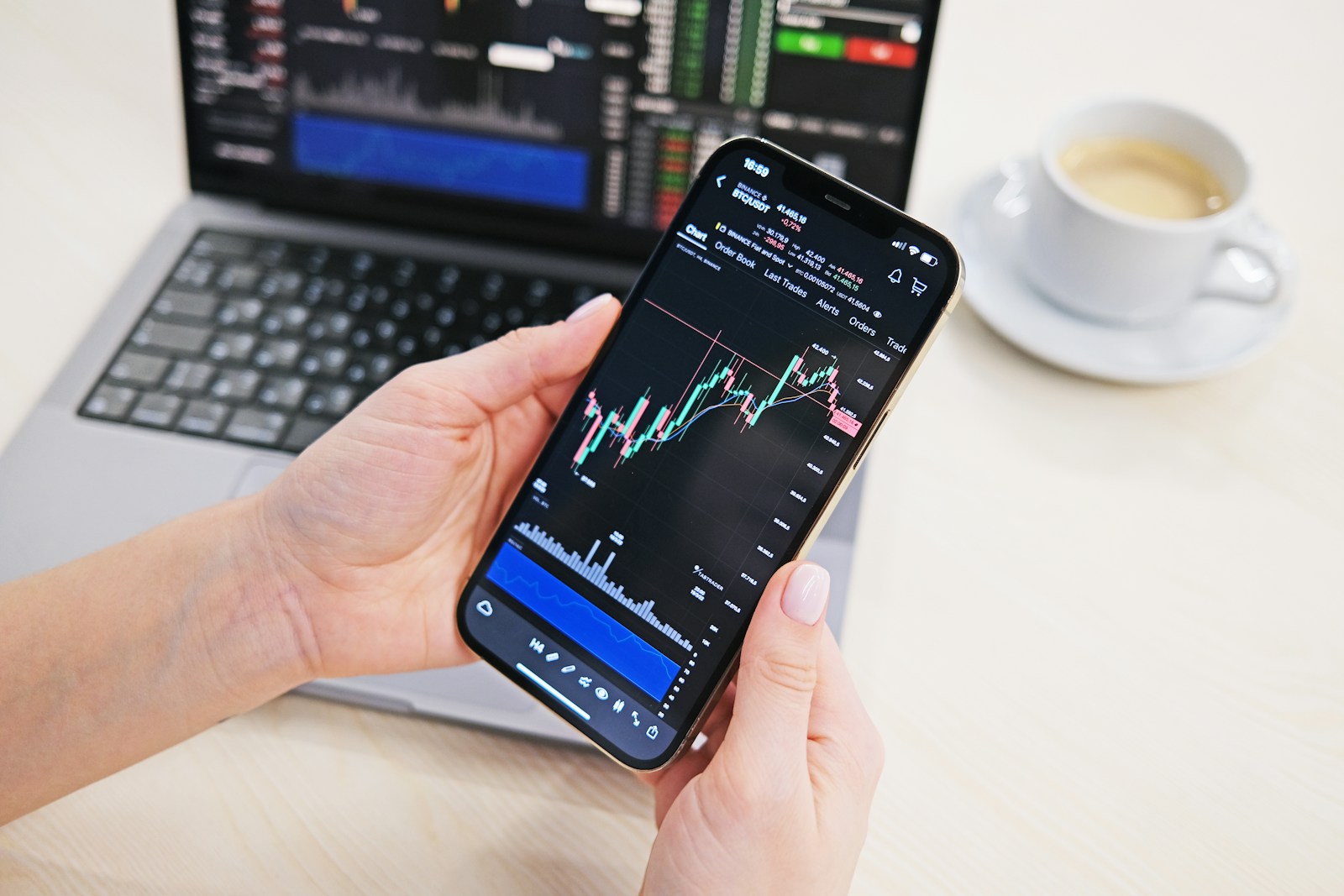
Using protective orders incorrectly can inflate losses instead of limiting them. Recent studies show that nearly 60% of market participants place these orders too close to entry points, triggering premature exits during normal volatility. A strategic approach requires factoring in average true range (ATR) and recent support-resistance levels rather than arbitrary percentages.
Protection is not just about capping downside but optimizing position sizing relative to risk exposure. For example, a fixed 2% risk per trade only works if the protective level reflects realistic price swings. Setting stops based on emotional thresholds or round numbers often leads to avoidable drawdowns and missed opportunities for recovery.
Miscalculation also stems from ignoring correlation between asset classes and overall portfolio risk. Using identical exit strategies across diverse instruments without adjustment increases vulnerability during high-volatility regimes like those seen in early 2024. Are standard rules sufficient when markets exhibit erratic behavior, or is adaptive management necessary?
Incorporating technical indicators such as moving averages or volatility channels into exit strategy formulation enhances decision-making accuracy. Case studies from forex and equities reveal that traders who align their protective measures with dynamic market conditions reduce loss frequency by up to 35%. This reinforces the idea that protection must be an active process, integrated tightly with broader trading plans.
Stop losses: why most traders set them wrong [Trading & Investment trading]
Effective execution of exit orders requires a precise strategy tailored to market volatility and individual risk tolerance. Many participants fail because they place protective orders at arbitrary price levels, often too close to current quotations, which leads to premature order triggering and unnecessary erosion of capital. Optimal placement should consider average true range (ATR) metrics or historical support zones to enhance the balance between protection and avoiding needless exits.
Risk management is compromised when exit points do not account for slippage and liquidity conditions, especially during periods of high market turbulence. For instance, during the 2021 crypto market crash, abrupt liquidity drops caused stop executions far below intended levels, amplifying realized losses beyond planned thresholds. Incorporating conditional orders with time-based triggers can mitigate such issues by preventing impulsive reactions to transient price spikes or dips.
Common pitfalls in loss prevention techniques
The prevalent mistake lies in setting protective limits based solely on fixed percentages without adjusting for asset-specific behavior or macroeconomic factors influencing price dynamics. A rigid 5% threshold may suffice for large-cap coins with low volatility but proves ineffective for altcoins exhibiting double-digit daily swings. Furthermore, neglecting order type distinctions–such as market versus limit exits–can result in suboptimal fills and exacerbate slippage risks under stressed conditions.
Analysis of Binance’s order book data reveals that approximately 40% of stop-type orders cluster around psychologically significant numbers (e.g., round figures like $50 or $100), making these levels prone to rapid breaches triggered by algorithmic trading bots exploiting crowd behavior. This phenomenon emphasizes the need for dynamic adjustment strategies incorporating real-time volume and momentum indicators rather than static numerical targets.
Implementing advanced protection mechanisms involves layering multiple exit criteria tied to technical indicators such as moving averages crossover or Relative Strength Index (RSI). For example, combining a trailing protective order with an RSI threshold below 30 could prevent unnecessary exit during minor retracements while securing profits before a major downturn. Case studies from institutional portfolios demonstrate that such hybrid approaches reduce drawdowns by up to 15%, compared to single-parameter systems.
In conclusion, refining exit protocols demands continuous monitoring and adaptation aligned with evolving market conditions. Sophisticated risk management frameworks integrate quantitative analysis with behavioral finance insights to optimize execution timing and minimize unfavorable outcomes. Ignoring these complexities results in frequent misjudgments that erode portfolio value despite ostensibly prudent safeguards.
Common stop loss placement mistakes
Placing exit orders too close to the entry price often results in premature liquidation due to normal market volatility rather than genuine trend reversals. For instance, a cryptocurrency with an average daily price fluctuation of 3% requires exit thresholds wider than typical intraday oscillations to avoid being stopped out unnecessarily. This mistake undermines protection by triggering losses from market noise instead of actual adverse movement.
Another frequent error involves ignoring key technical levels when determining risk boundaries. Setting exit points arbitrarily without considering support, resistance, or volume profiles diminishes the effectiveness of risk management strategies. A more robust approach integrates these factors, aligning exit parameters with structural price behavior to preserve capital during unfavorable shifts.
Underestimating slippage and order execution delays can also distort intended risk exposure. During high volatility events or low liquidity periods, protective orders may execute at prices significantly different from their triggers, exacerbating loss magnitude. A documented case occurred during the 2021 crypto market correction when rapidly declining prices caused numerous stop exits to trigger at worse-than-expected levels, inflating realized drawdowns beyond planned tolerances.
Overreliance on fixed-percentage thresholds without adjusting for asset-specific characteristics represents another pitfall. Applying uniform exit criteria across diverse cryptocurrencies disregards differences in volatility regimes and market microstructure. For example, a 5% buffer might suit Bitcoin but proves insufficient or excessive for smaller altcoins with distinct price dynamics, leading to either excessive risk or missed protection opportunities.
Neglecting periodic reevaluation of protective limits impairs adaptive strategy implementation. Market conditions evolve–volatility spikes, trend strength shifts–and rigid parameters become obsolete quickly. Traders who fail to adjust their exit points accordingly expose themselves to disproportionate risks or unnecessary early exits that erode overall portfolio performance over time.
Finally, emotional interference frequently compromises rational risk control measures. Panic-driven adjustments or impulsive widening of exit distances after consecutive setbacks weaken discipline and increase vulnerability to larger downturns. Maintaining consistent application of well-researched protective frameworks ensures better preservation of capital and long-term trading viability amidst fluctuating market environments.
Impact of Volatility on Stops
Adjusting order protection levels according to market volatility is critical for effective risk management. In periods of heightened price swings, placing exit points too close to the entry can result in premature execution, triggering unnecessary exits and increasing overall trading costs. For instance, Bitcoin’s 30-day historical volatility often fluctuates between 3% and 8%, suggesting that a static buffer around an entry price fails to account for these dynamics. A strategy incorporating Average True Range (ATR) multiples allows traders to calibrate their exit thresholds more precisely, reducing unintended liquidation during normal market noise.
Execution timing also plays a pivotal role when dealing with volatile environments. Rapid price movements may cause slippage, where the final fill price differs significantly from the intended protective level. During the March 2020 crypto crash, many automated systems faced stop executions far below set values due to liquidity gaps and order book thinness. Incorporating dynamic order adjustments or implementing trailing mechanisms can mitigate such risks by adapting protection parameters as volatility shifts, thereby optimizing position sustainability without sacrificing downside control.
Risk allocation must be closely aligned with volatility metrics to prevent disproportionate capital exposure. A fixed percentage risk per trade without considering increased market turbulence leads to inconsistent outcomes; a 1% risk target on an asset exhibiting 10% intraday swings demands wider protective ranges compared to assets with stable behavior under 2%. Case studies from decentralized exchanges reveal that failure to adjust exit points proportionally results in frequent stop executions followed by swift reversals, eroding potential profitability and complicating portfolio management.
Incorporating volatility-based indicators into exit strategies enhances decision-making precision and resilience against abrupt market shocks. Tools like Bollinger Bands or Keltner Channels provide visual context for establishing adaptive buffers that reflect real-time conditions rather than static thresholds. This approach aligns protection levels with actual price action patterns rather than arbitrary percentages, fostering better execution consistency and improved capital preservation over multiple trade cycles–key elements in long-term strategy viability within highly volatile cryptocurrency markets.
Using ATR for Stop Sizing
ATR (Average True Range) provides an objective measure of market volatility, making it a reliable tool for determining stop placement in trading. By calculating the average range of price movement over a specific period–commonly 14 days–ATR helps to adjust exit points dynamically according to current market conditions. This approach mitigates common errors where stops are placed arbitrarily tight or excessively wide, which can either cause premature exits or expose capital to unnecessary drawdowns.
Risk management benefits significantly from incorporating ATR-based sizing because it aligns position risk with real-time volatility. For example, if Bitcoin’s ATR is $500 on a daily chart, setting a protective threshold at 1.5 times ATR ($750) below the entry price accounts for ordinary price fluctuations and reduces the chance of being stopped out by random noise. Such calculation enhances strategy consistency and execution discipline across varying asset classes and timeframes.
Common Pitfalls in Execution Without Volatility Adjustment
Ignoring volatility metrics like ATR often results in frequent premature trade terminations or excessive capital exposure. For instance, during periods of heightened crypto market turbulence–as witnessed during the May 2021 correction–static stop distances led many to incur larger-than-expected drawdowns. Traders who relied solely on fixed percentage stops failed to accommodate expanding price ranges, illustrating a critical mistake in adaptive risk control frameworks.
Conversely, overly generous buffers based on intuition rather than data can inflate loss potential unnecessarily. Employing an ATR multiple that is too large inflates position size risk and undermines overall portfolio stability. Studies analyzing intraday Ethereum price movements demonstrate that optimal multiples typically range between 1.2x and 2x ATR depending on chosen strategy aggressiveness and holding period, thus reinforcing the necessity for tailored calibration rather than arbitrary settings.
Integrating ATR into Position Sizing Models
A practical method involves calculating position size by dividing predetermined risk per trade by the dollar value represented by one ATR unit multiplied by a chosen multiplier. For example:
This quantitative model ensures that regardless of changing volatility regimes, exposure remains aligned with predefined risk tolerance levels while accommodating natural market fluctuations.
The Role of Strategy Adaptation During Market Regimes
Volatility regimes fluctuate due to macroeconomic events or sector-specific catalysts within blockchain ecosystems such as protocol upgrades or regulatory announcements. Therefore, adapting multiplier values based on recent ATR trends improves resilience against false signals and whipsaws. During stable phases with low ATR values–for instance, when BTC daily ATR drops below $200–tightening multipliers closer to 1x minimizes unnecessary drawdown buffers without compromising protection.
A case study involving DeFi token pairs showed that coupling ATR-based stops with momentum indicators reduced average drawdown by approximately 15%, highlighting how integrated approaches enhance execution quality and reduce emotional decision-making errors commonly seen in manual stop adjustments.
Navigating Practical Limitations and Enhancing Robustness
No single indicator is infallible; reliance on ATR must be complemented with contextual analysis including order book depth, volume spikes, and news flow impact assessment to avoid misinterpretation of volatility spikes as trend reversals or continuation signals. Moreover, backtesting diverse cryptocurrencies reveals that assets with irregular liquidity profiles may require smoothing techniques applied to raw ATR values to prevent erratic stop placements.
Incorporating machine learning models trained on historical volatility patterns alongside traditional technical measures offers promising avenues for refining stop sizing strategies further. Nonetheless, practitioners should maintain vigilant monitoring of execution outcomes and continuously recalibrate parameters reflecting evolving market microstructures inherent in blockchain-based asset classes.
Adjusting Stops During Trades: Strategic Execution and Risk Management
Dynamic modification of exit points within a position is integral to disciplined strategy execution and nuanced risk control. Rigid adherence to initial protective thresholds often results in premature exits or amplified drawdowns, while adaptive adjustment aligns with evolving market structure and volatility metrics. For example, during the volatile swings of Bitcoin’s 2023 rally, traders employing trailing protective mechanisms that tightened stops at key Fibonacci retracement levels preserved gains exceeding 15%, compared to static thresholds yielding sub-5% returns or larger setbacks.
Effective management of these exit triggers requires continuous monitoring of order execution quality and slippage impact. Algorithms incorporating volume-weighted average price (VWAP) and real-time depth-of-book data can recalibrate thresholds within milliseconds, minimizing execution latency that historically inflated risks during rapid corrections. Neglecting such precision introduces common pitfalls including emotional bias and confirmation errors, which compromise overall performance consistency.
Key Technical Insights and Forward-Looking Implications
- Volatility-Adjusted Thresholds: Integrating ATR-based calculations allows for context-sensitive trigger placements, reducing noise-induced premature position closures without exposing portfolios to outsized losses.
- Partial Exit Strategies: Layered removal of exposure at incremental adverse price points enables refined capital preservation while retaining upside participation–crucial in asymmetrical risk-reward setups prevalent in altcoin trading pairs.
- Machine Learning Enhancements: Emerging frameworks utilize pattern recognition on intraday candlestick formations to suggest stop recalibrations aligned with shifting momentum regimes.
The broader implication lies in transitioning from static rule sets toward adaptive, data-driven risk protocols that evolve with market microstructure shifts. As decentralized exchanges increase throughput capacity and latency shrinks to near-instantaneous levels via layer-2 solutions, the feasibility of ultra-responsive protective measures will expand, potentially transforming traditional notions of trade risk management.
This progression demands enhanced trader education focused on integrating quantitative tools with experiential judgment. Avoiding common errors such as setting excessively tight buffers or ignoring liquidity constraints will differentiate strategic efficacy amid heightened market complexity. Ultimately, flexible exit point adjustments serve not merely as damage limitation but as proactive components of holistic portfolio stewardship designed for both current conditions and anticipated technological advances.








